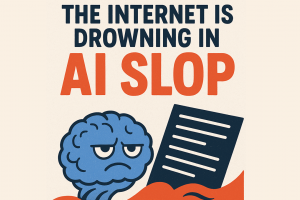Your emotions aren’t invisible. They rewrite your hormones, your immune system, even how your cells repair themselves. Dive into the science of how stress, joy, love, and gratitude can literally shape your body — and discover how to regain balance through simple, natural changes.
Have you ever noticed how your heart races when you’re anxious, your stomach tightens when you’re scared, or your skin glows when you’re in love?
That’s not coincidence — it’s biochemistry in motion.
Our emotions are not abstract. They’re deeply physical.
They shape our hormones, our immunity, our sleep, our digestion — even the way our genes express themselves.
Welcome to the fascinating world where psychology meets biology — where “feeling” literally changes “healing.”
1. Mind & Nervous System — How Emotions Talk to Your Body
The brain and body are in constant conversation.
When you feel stressed, your brain activates the hypothalamic-pituitary-adrenal (HPA) axis, releasing cortisol and adrenaline. These hormones prepare your body for “fight or flight.”
Heart rate rises, breathing quickens, blood rushes to your muscles.
That’s great for escaping danger.
But what happens when that stress is emotional — a deadline, an argument, or chronic worry?
Your nervous system doesn’t know the difference.
The same stress hormones surge, day after day.
And slowly, that biological alert system becomes toxic:
-
Sleep becomes shallow.
-
Digestion slows down.
-
Inflammation rises.
-
Immune function drops.
Scientists call this chronic sympathetic activation — the state of being “always on.”
It’s the silent reason why modern professionals feel exhausted yet wired, anxious yet numb.
But here’s the twist: emotions like joy, gratitude, and calm send an entirely different message.
They activate the parasympathetic nervous system — the “rest and digest” mode.
In this state, your body repairs, regenerates, and strengthens immunity.
Your heart rate lowers. Your cells literally “breathe easier.”
2. Hormones & Emotions — The Two-Way Street
Emotions change hormones — and hormones shape emotions.
When you feel connected, your brain releases oxytocin, the “bonding hormone.” It reduces stress and supports heart health.
When you achieve something meaningful, dopamine surges — motivating you to repeat that behavior.
When you feel content and grounded, serotonin rises — improving mood and digestion.
But it works both ways.
Low serotonin can make you feel irritable or depressed.
Chronic cortisol elevation can cause anxiety and memory problems.
A lack of dopamine can make life feel dull, even when things are fine.
This feedback loop creates your emotional baseline — your body’s default mood setting.
That’s why “thinking positive” is not just about mindset; it’s about resetting your body’s chemistry.
3. Immunity & Emotions — The Science of “Mind-Body Medicine”
The phrase “When the mind suffers, the body follows.” — emotional illness creates physical illness — is more than poetic wisdom. It’s neuroscience.
Harvard studies have shown that chronic stress suppresses lymphocyte production — your white blood cells that fight infections.
A Stanford meta-analysis found that people with high emotional resilience recover from surgery 40% faster.
And laughter? It can increase your body’s production of natural killer cells — the immune soldiers that destroy viruses and even cancer cells.
On the flip side, loneliness and prolonged anger can raise inflammatory markers like CRP and IL-6, leading to cardiovascular disease, diabetes, and autoimmune issues.
Your emotions literally decide how your immune system responds.
When your heart is heavy, your cells listen.
When your mind is peaceful, your body heals.
4. Common Signs & Emotional Imbalances
Sometimes the body whispers before it screams.
Here are some subtle ways your emotional state might be showing up physically:
| Emotion | Typical Body Reaction | Common Symptoms |
|---|---|---|
| Anxiety | Overactive sympathetic system | Insomnia, rapid heartbeat, gut issues |
| Sadness | Low serotonin & dopamine | Fatigue, body pain, brain fog |
| Anger | Adrenaline & cortisol spikes | Headaches, hypertension, tense muscles |
| Loneliness | Low oxytocin | Low immunity, inflammation, sugar cravings |
| Joy/Gratitude | Parasympathetic activation | Relaxed muscles, good digestion, glowing skin |
Your body never lies.
Every symptom is a message — not just from your cells, but from your emotions.
5. Natural Solutions & Lifestyle Reset
The good news? You can train your body to return to emotional balance — without synthetic pills or toxic cycles.
Here’s how to biohack your mood and immune system naturally:
🌤️ 1. Start Your Morning with Light & Breath
Exposure to natural light for 10 minutes upon waking resets your circadian rhythm, boosts serotonin, and lowers cortisol.
Combine it with 4-7-8 breathing — inhale for 4, hold for 7, exhale for 8. It instantly signals your nervous system: “You’re safe.”
🧘 2. Practice Emotional Hygiene
Just as you brush your teeth, cleanse your emotions daily.
Journaling, mindfulness, or simply talking to a trusted friend can release mental tension before it becomes physical.
Studies show that expressive writing reduces doctor visits by up to 40%.
🥗 3. Eat for Your Neurochemistry
Your gut is your “second brain.”
Foods rich in tryptophan (bananas, eggs, turkey), omega-3 (salmon, chia seeds), and magnesium (dark chocolate, spinach) nourish your serotonin and dopamine pathways.
Avoid chronic sugar spikes — they mimic stress in the brain.
🚶 4. Move Emotion Into Motion
Exercise is emotion in motion.
Even 20 minutes of walking triggers endorphin release and reduces cortisol by up to 25%.
Movement is medicine — for both body and mind.
😴 5. Protect Your Sleep Like a Ritual
Sleep is the ultimate reset for your hormones and immune system.
Avoid screens 1 hour before bed, keep your room dark, and aim for consistent sleep-wake cycles.
Remember: melatonin is the hormone of repair, not just rest.
💓 6. Reconnect Socially
Community heals what medicine cannot.
Meaningful connections trigger oxytocin, lower inflammation, and strengthen your immune system.
Hug more. Listen more. Be present more.
6. Modern Science & Breakthrough Studies
Science is catching up with what ancient wisdom has long said:
Your emotional state shapes your biology.
🔹 Harvard Medical School (2021) — Mindfulness practices reduced gene expression linked to inflammation by up to 50%.
🔹 Stanford University (2020) — Participants who practiced gratitude journaling had higher levels of IgA, a key immune antibody.
🔹 University of Wisconsin — Monks practicing loving-kindness meditation showed increased gamma brain waves — linked to compassion and clarity.
🔹 Yale School of Medicine — Chronic loneliness activates the same brain regions as physical pain.
🔹 Johns Hopkins — Positive emotional regulation can lower heart disease risk by 23%.
Emotions are data.
And the body? It’s the ultimate feedback system.
When we align emotion, thought, and behavior — healing is no longer mystical. It’s measurable.
7. The Bigger Picture — A New Definition of Health
Health is not just “no disease.”
It’s the harmony between your nervous system, hormones, immunity, and emotions.
You can’t fix the body without touching the mind.
You can’t balance hormones without balancing habits.
And you can’t boost immunity without boosting joy.
The future of wellness is integrative — where neuroscience, psychology, and nutrition work together.
Where medicine treats the whole person, not just the symptom.
Where “feeling better” is as important as “being better.”
So next time you feel anxious, sad, or exhausted — don’t just ask “What’s wrong with me?”
Ask instead:
👉 “What emotion am I holding that my body is trying to release?”
Because sometimes, healing begins not in the pharmacy — but in forgiveness, laughter, or a long walk under the sun.
🌱 Final Thought
Your mind is the chemist.
Your body is the laboratory.
And every emotion is a signal — a molecule of meaning.
Learn to listen… and your body will learn to heal.


























